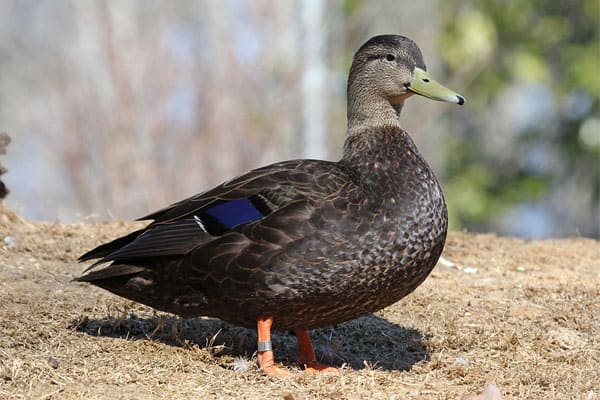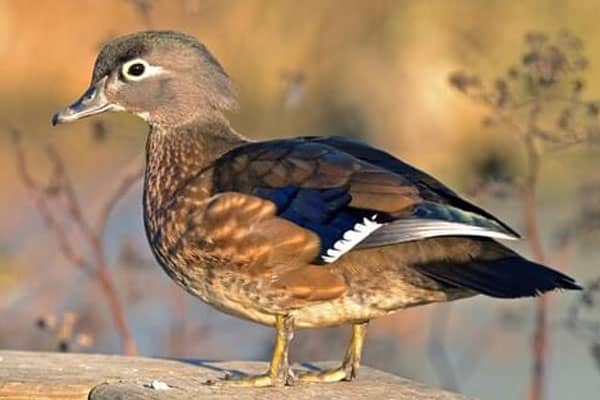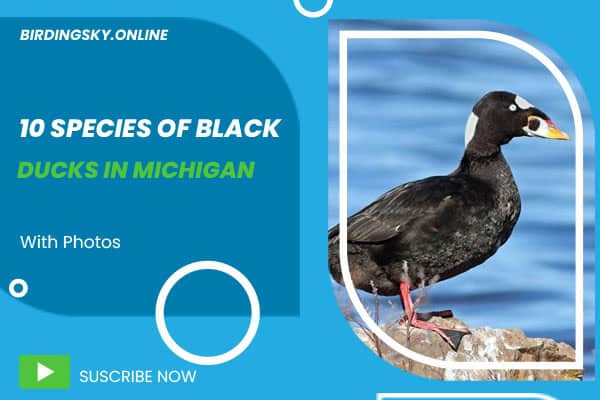Did you know that Michigan is home to an incredible 18 different types of black ducks? From the beloved mallard to the striking wood duck, the Great Lakes State is a true haven for waterfowl enthusiasts and nature lovers alike. In this comprehensive guide, we’ll dive into the 10 most common species of black ducks in Michigan, uncovering their unique characteristics, habitats, and the vital roles they play within the state’s vibrant ecosystem.
Michigan’s diverse wetlands, lakes, and rivers provide the perfect breeding grounds and year-round habitats for a wide array of michigan duck species, including some rare and captivating black ducks in michigan. As we explore these feathered residents, we’ll gain a deeper appreciation for the intricate balance of Michigan’s natural landscape and the importance of preserving these incredible michigan ducks images.
So, whether you’re a seasoned birdwatcher or simply curious about the avian life that calls Michigan home, join us as we uncover the 10 most fascinating types of black ducks in michigan and the stories they have to tell.
Introduction to Black Ducks in Michigan
Michigan is home to a remarkable diversity of black duck species, each with its own distinctive features and ecological roles. These ducks, which can range from the familiar mallard to the more elusive wood duck, play a vital part in maintaining the delicate balance of Michigan’s wetlands, lakes, and rivers. As we explore the 10 species of black ducks that call this state home, we’ll uncover the unique adaptations and behaviors that allow these birds to thrive in the Great Lakes region.
Diverse Varieties of Black Ducks
The state of Michigan boasts a wide array of black duck species, each with its own unique characteristics and significance within the local ecosystem. From the iconic American black duck to the stunning wood duck, these feathered residents of Michigan’s waterways and wetlands play a crucial role in maintaining the delicate balance of the region’s natural habitats. As we delve into the diverse varieties of black ducks found in Michigan, we’ll gain a deeper appreciation for the richness and complexity of the state’s waterfowl community.
Significance of Black Ducks in Michigan’s Ecosystem
Black ducks, in all their diverse forms, are integral to the health and vitality of Michigan’s ecosystems. These adaptable birds thrive in the state’s wetlands, lakes, and rivers, acting as important indicators of environmental quality and playing key roles in the food chain. From their contributions to nutrient cycling to their role as prey for larger predators, black ducks are essential components of Michigan’s vibrant and interconnected natural landscape. As we explore the significance of these ducks, we’ll uncover the vital ways in which they shape and maintain the delicate balance of the Great Lakes State’s diverse habitats.
Identifying Characteristics of Common Black Ducks
As we delve into the fascinating world of black ducks in Michigan, understanding their distinctive physical traits and behavioral patterns is crucial. Each species of these captivating birds exhibits unique adaptations that allow them to thrive in the diverse habitats found throughout the Great Lakes State.
Plumage and Physical Traits
The vibrant plumage of Michigan’s black ducks is a true sight to behold. From the iridescent greens and purples of the mallard to the striking white-and-black patterns of the wood duck, these feathered residents come in a wide array of colors and markings. Their physical builds also vary, with some species like the [types of black ducks in michigan] being smaller and more agile, while others, such as the [small black ducks in michigan], boast a more robust stature. Closely observing these subtle differences in [michigan duck species] and [michigan ducks images] can be a rewarding experience for birdwatchers and naturalists alike.
Behavioral Patterns and Habitats
Beyond their physical characteristics, the behavioral patterns and preferred habitats of black ducks in Michigan also play a crucial role in their survival and success. Some species, like the types of black ducks in michigan, thrive in the state’s wetlands and marshes, while others, such as the small black ducks in michigan, are more at home in the forests and wooded areas. Understanding these distinct preferences and adaptations allows us to better appreciate the diverse ecosystem that these michigan duck species and michigan ducks images call home.
Size
| Species | Plumage | Habitat | |
|---|---|---|---|
| Mallard Duck | Iridescent green head, brown body, white collar | Medium-sized | Wetlands, ponds, lakes |
| Wood Duck | Striking white-and-black pattern, crested head | Medium-sized | Forested wetlands, rivers, swamps |
| American Black Duck | Uniformly dark brown plumage | Medium-sized | Marshes, estuaries, coastal areas |
Black Ducks in Michigan
Among the diverse array of black ducks found in Michigan, three species stand out as the most well-known and widespread: the American black duck, the mallard, and the wood duck. Each of these ducks brings its own unique characteristics and ecological significance to the state’s vibrant waterfowl community. As we explore the physical traits, behaviors, and habitats of these three iconic black duck species, we’ll gain a deeper appreciation for their role in Michigan’s natural landscape.
1. American Black Duck

The American black duck is a true icon of Michigan’s wetlands, easily recognized by its rich, dark plumage and distinctive bill. These ducks thrive in the state’s coastal marshes, lakes, and rivers, where they forage for aquatic plants, insects, and small fish. With their strong social bonds and adaptable nesting habits, American black ducks play a vital role in maintaining the delicate balance of Michigan’s aquatic ecosystems.
2. Mallard Duck

The mallard duck is perhaps the most familiar and widely-recognized black duck species in Michigan. Known for its striking green head, brown body, and curled tail feathers, the mallard is a common sight throughout the state, from urban ponds to rural wetlands. These adaptable birds excel at navigating a variety of habitats, making them a beloved and ubiquitous part of Michigan’s waterfowl community.
3. Wood Duck

In contrast to the more common mallard, the wood duck is a true gem of Michigan’s wetlands. With its iridescent plumage, distinctive crest, and preference for wooded swamps and tree cavities, the wood duck is a captivating and visually stunning black duck species. These ducks play a crucial role in the state’s forest ecosystems, serving as important pollinators and dispersers of aquatic plants.
Lesser-Known Black Duck Species
While the American black duck, mallard, and wood duck may be the most recognized black duck species in Michigan, the state is also home to a host of lesser-known but equally fascinating ducks. The American wigeon and the gadwall, for example, are two species that, while not as widely known, play important roles in Michigan’s diverse waterfowl community.
4. American Wigeon
The American wigeon, also known as the “baldpate,” is a medium-sized duck with a distinctive green patch on its head and a white stripe along its wing. These ducks are often found in mixed flocks with other waterfowl, such as the mallard and the gadwall. They are known for their unique feeding behavior, where they may even steal aquatic plants from other ducks or dive for submerged vegetation. The American wigeon is a common sight in Michigan’s wetlands, lakes, and rivers, adding to the state’s rich diversity of black duck species.
Check Our Previous Posts:
| Hummingbird Eggs: Facts and Care Guide |
| Discover Woodpecker Spiritual Meaning |
| DOVES In KANSAS (4 SPECIES TO KNOW) |
| 7 DOVES (& PIGEONS) THAT LIVE IN ARIZONA |
5. The Gadwall
The gadwall, also known as the “gray duck,” is a sleek and streamlined black duck species that can be easily overlooked. With its mottled gray plumage, the gadwall blends seamlessly into its surroundings, making it a challenge for birdwatchers to spot. However, these ducks play a crucial role in Michigan’s wetland ecosystems, feeding on a variety of aquatic plants and insects. Gadwalls are often found in mixed flocks with other duck species, adding to the vibrant and diverse waterfowl communities that thrive in the Great Lakes State.


Add comment